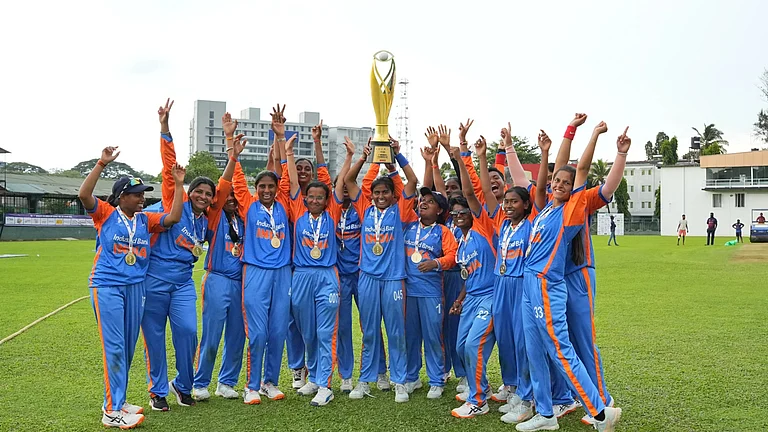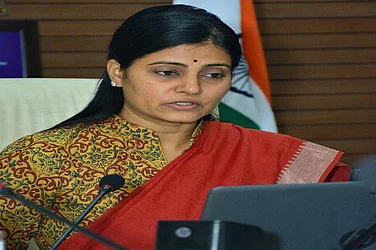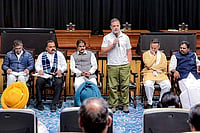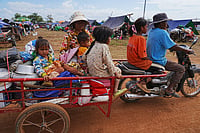Corneal blindness (CB), once seen primarily as a condition affecting the elderly, is increasingly threatening the vision of teenagers and young adults across India.
The numbers are quite staggering. According to experts at the Indian Society of Cornea and Kerato-Refractive Surgeons’ (ISCKRS) India, records between 20,000 and 25,000 new cases of CB every year, adding to the existing pool of approximately 12 lakh affected individuals. Globally, around 8 million people are affected with CB.
“A large number of fresh CB cases in India are now being seen in individuals under the age of 30 years. We are witnessing a dangerous shift. Young people are losing their vision due to entirely avoidable conditions,” said Prof. Rajesh Sinha, Professor of Ophthalmology at AIIMS, New Delhi.
CB results from damage or scarring to the cornea, the transparent layer at the front of the eye responsible for refracting light. When the cornea becomes cloudy or opaque, it prevents light from reaching the retina, which can cause severe vision loss or complete blindness.
Unlike other types of blindness, CB is not just age-related or genetic; it can result from infections, malnutrition, eye injuries, and deficiencies, including lack of essential nutrients like vitamin A. This type of blindness can affect anyone at any stage in life, which makes it a critical public health issue.
“Simple infections, untreated injuries, and lack of awareness are turning into permanent visual disabilities,” added Dr. Sinha.
While infections such as keratitis once dominated, recent years have seen a notable increase in eye trauma and injuries, particularly in rural and semi-urban areas where healthcare accessibility remains limited. The infectious causes are due to bacteria, viruses, fungi, and protozoa. The most common predisposing factors are trauma, contact lens usage, or the use of steroid medications,as per the health experts.
A review article ‘Corneal blindness and eye banking: Current strategies and best practices’ published in International journal of Ophthalmology in 2023, cited three population-based studies conducted in India on the burden of the disease. In the Andhra Pradesh study, 0.1% suffer from CB; the prevalence is 3.9%; among them, 2.9% are unilaterally blind, 3.7% of CB is prevalent in Northern India, and 13.3% is prevalent in corneal blindness in Kurnool.
There exists a regional difference in the etiology of CB; ocular trauma is the leading cause of CB in North Telangana and Kurnool (59.3% and 45%, respectively) compared with pseudophakic bullous keratopathy as the leading cause of CB in North India (46.2%), as per the authors including Dr. Radhika Tandon, now head of the RP Centre for Ophthalmic Sciences at the AIIMS, Delhi and Anitha, Venugopal from Aravind Eye Hospital and Post Graduate Institute of Ophthalmology, Tirunelveli, Tamil Nadu among others.
According to Dr. Smit Bavaria, a cataract surgeon at the Dr. Agarwals Eye Hospital, “Keratitis, if untreated, often progresses from mild irritation to severe corneal scarring, culminating in irreversible vision loss. Early diagnosis and intervention are key to preventing permanent damage.”
Dr. Preethi Naveen, Senior Cornea and Refractive Surgeon and Medical Director of Dr. Agarwals Eye Bank, Chennai, elaborated on the socio-economic factors aggravating the issue. “Infections like trachoma, work-related injuries, and vitamin A deficiency—prevalent in many rural areas—remain the leading contributors to corneal blindness. The problem is exacerbated by poor hygiene, delayed medical care, and limited awareness about eye health, especially among children and the working-age population.”
Advanced diagnostic tools such as slit-lamp biomicroscopy and anterior segment optical coherence tomography (AS-OCT) have enhanced the ability of ophthalmologists to detect and manage corneal conditions more effectively. However, treatment outcomes can be compromised by underlying health issues like diabetes and immune disorders.
Corneal transplantation is one of the most effective solutions to restore vision for those affected by corneal blindness. However, India faces a severe shortage of corneal donors, with only about 25,000 to 30,000 corneas donated each year. This falls far short of the demand, as nearly 200,000 people need transplants annually.
However, efforts are on to meet these challenges. Last year, a pilot project led by ICMR in partnership with AIIMS, Delhi and Dr. Shroff’s Charity Eye Hospital, with support from the Ministry of Civil Aviation, has demonstrated the potential of drone technology in transporting delicate ophthalmic tissues.
In Haryana, drones have successfully delivered corneal grafts from collection centres to tertiary care hospitals, reducing transit time from over two hours by road to under 40 minutes.
During the launch of the initiative, Prof. M. Srinivas, Director of AIIMS New Delhi, commented, “The use of drones for timely transport of corneal tissues could revolutionise access to sight-restoring surgeries, especially in remote areas where traditional logistics fall short.”


























